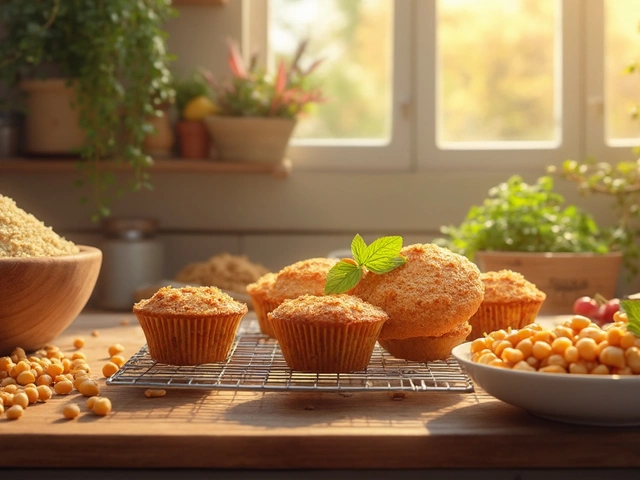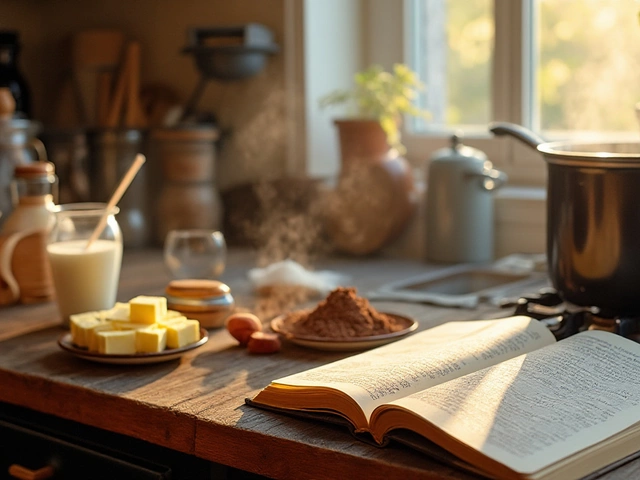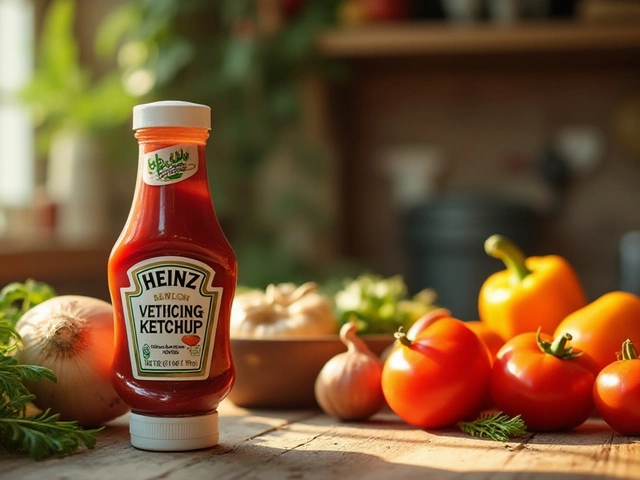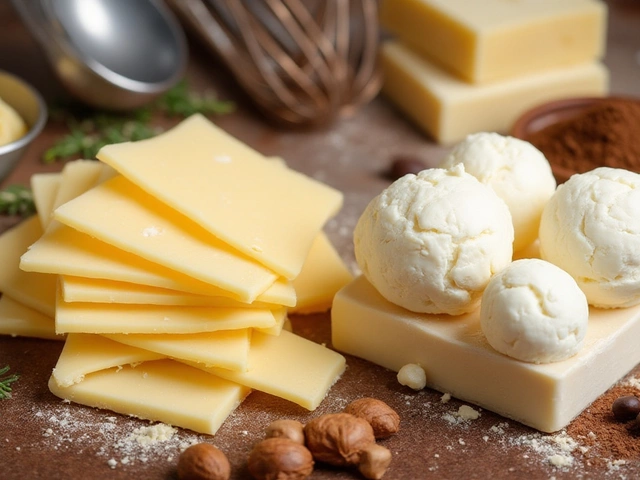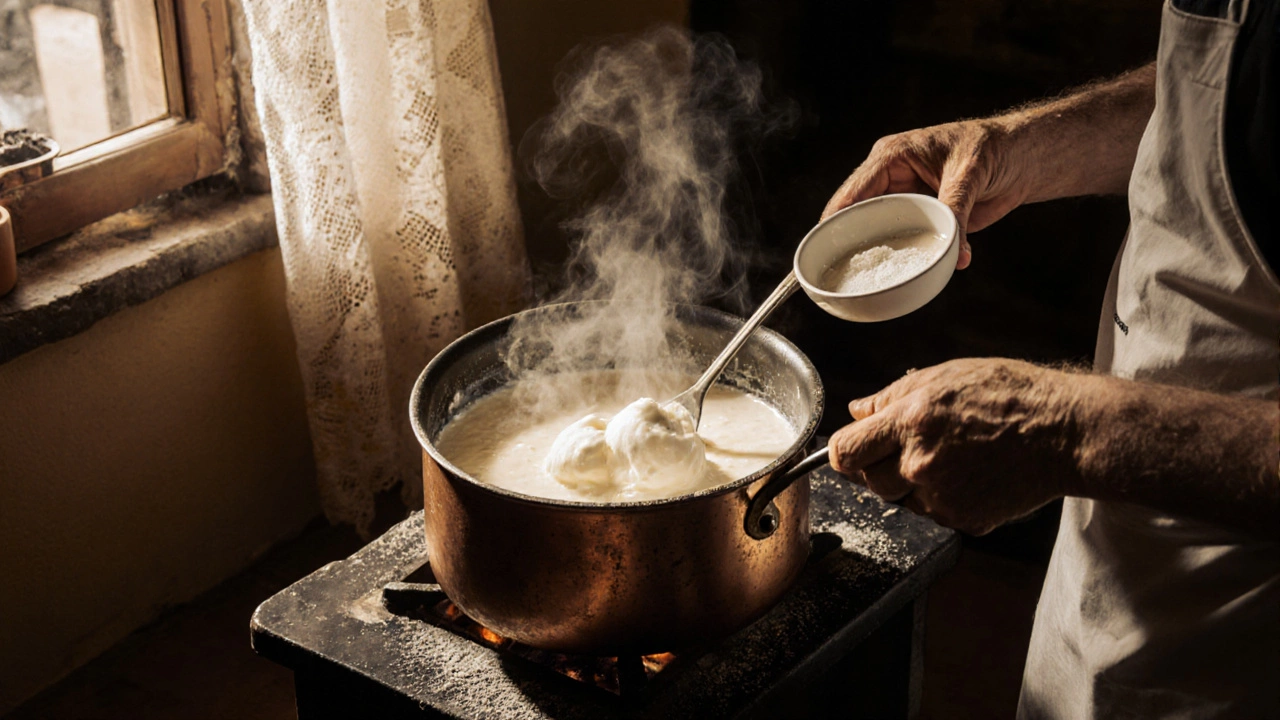
Mascarpone Explorer
What is Mascarpone?
Mascarpone is a rich, creamy Italian cheese made from fresh cream with a high fat content (45-55%). It's commonly used in desserts like tiramisu and cheesecakes, and can also be used in savory dishes.
Etymology
The name "mascarpone" comes from the Italian verb "mascarare," meaning "to mask" or "to cover," referring to its thick, coating texture.
Detailed Information
Mascarpone vs Similar Cheeses
| Attribute | Mascarpone | Ricotta | Cream Cheese |
|---|---|---|---|
| Base ingredient | Heavy cream | Whey (from cow or sheep milk) | Milk + cream |
| Fat content | 45-55% | 10-12% | 33-35% |
| Texture | Silky, buttery | Granular, slightly grainy | Firm, spreadable |
| Flavor | Sweet, subtle dairy | Mild, milky | Tangy, slightly sour |
| Common uses | Tiramisu, cheesecakes, frosting | Stuffed pastas, cannoli filling | Bagels, dips, cheesecakes |
When you see Mascarpone is a rich Italian cream cheese made from fresh cream and a touch of acidity, you might wonder what the name actually says about the product. The word mascarpone meaning isn’t just a fancy label - it tells a story of regional dairy traditions, linguistic twists, and the way the cheese works in classic desserts.
TL;DR
- Mascarpone is a soft, high‑fat Italian cream cheese that originated in Lombardy.
- The name comes from the Italian verb “mascarare,” meaning “to mask” or “to cover,” referring to its thick, coating texture.
- It’s made by heating cream and adding citric or acetic acid, then letting it set.
- Key uses: tiramisu, cheesecakes, frosting, and savory sauces.
- Compared to ricotta and cream cheese, mascarpone is sweeter, richer, and contains about 45‑55% fat.
What Is Mascarpone?
Mascarpone belongs to the broader family of cheese, but it’s technically a “fresh” cheese because it isn’t aged. Fresh cheeses are produced and sold within a few days, retaining a moist, creamy texture. Mascarpone’s hallmark is its buttery mouthfeel and natural sweetness, which comes from the high butterfat content in the cream used.
Nutrition‑wise, a typical 30g serving packs roughly 120kcal, 12g of fat (mostly saturated) and just 1g of protein. Because it’s low in moisture and high in fat, it behaves more like a spread than a crumbly cheese, making it ideal for both sweet and savory applications.
Etymology: Where Does the Word Come From?
The word mascarpone first appeared in Italian cooking texts in the late 16thcentury. Linguists trace it back to the Lombard verb “mascarare,” which means “to beat” or “to mash.” Another theory links it to the older term “mascarpina,” a kind of cheese made in the Po Valley. Both ideas point to the process of turning liquid cream into a thick, spreadable mass - essentially “masking” the fluid into a solid form.
In modern Portuguese, the phrase "o que significa a palavra mascarpone?" translates directly to “what does the word mascarpone mean?” showing how the term has crossed language borders thanks to the popularity of Italian desserts worldwide.
How Is Mascarpone Made?
The traditional method is simple but precise:
- Start with high‑quality, pasteurised heavy cream (minimum 35% fat).
- Heat the cream to about 85°C (185°F) while stirring gently.
- Add a measured amount of citric acid or vinegar - this lowers the pH, causing the cream to thicken.
- Maintain the low heat for a few more minutes until a smooth, custard‑like body forms.
- Cool the mixture, then let it sit in a fine‑mesh sieve lined with cheesecloth for 12‑24hours.
- The liquid whey drains away, leaving behind the dense, buttery mascarpone you’ll buy in a tub.
Because no rennet or bacterial cultures are used, the flavor stays neutral, allowing other ingredients to shine through when the cheese is incorporated into recipes.
Mascarpone vs. Similar Fresh Cheeses
| Attribute | Mascarpone | Ricotta | Cream Cheese |
|---|---|---|---|
| Base ingredient | Heavy cream | Whey (often from cow or sheep milk) | Milk + cream |
| Fat content | 45‑55% | 10‑12% | 33‑35% |
| Texture | Silky, buttery | Granular, slightly grainy | Firm, spreadable |
| Flavor | Sweet, subtle dairy | Mild, milky | Tangy, slightly sour |
| Common uses | Tiramisu, cheesecakes, frosting | Stuffed pastas, cannoli filling | Bagels, dips, cheesecakes |
Understanding these differences helps you pick the right cheese for a recipe. If you need a velvety, high‑fat component, mascarpone wins. For a lighter texture, ricotta is the go‑to. Want a tangy spread, reach for cream cheese.
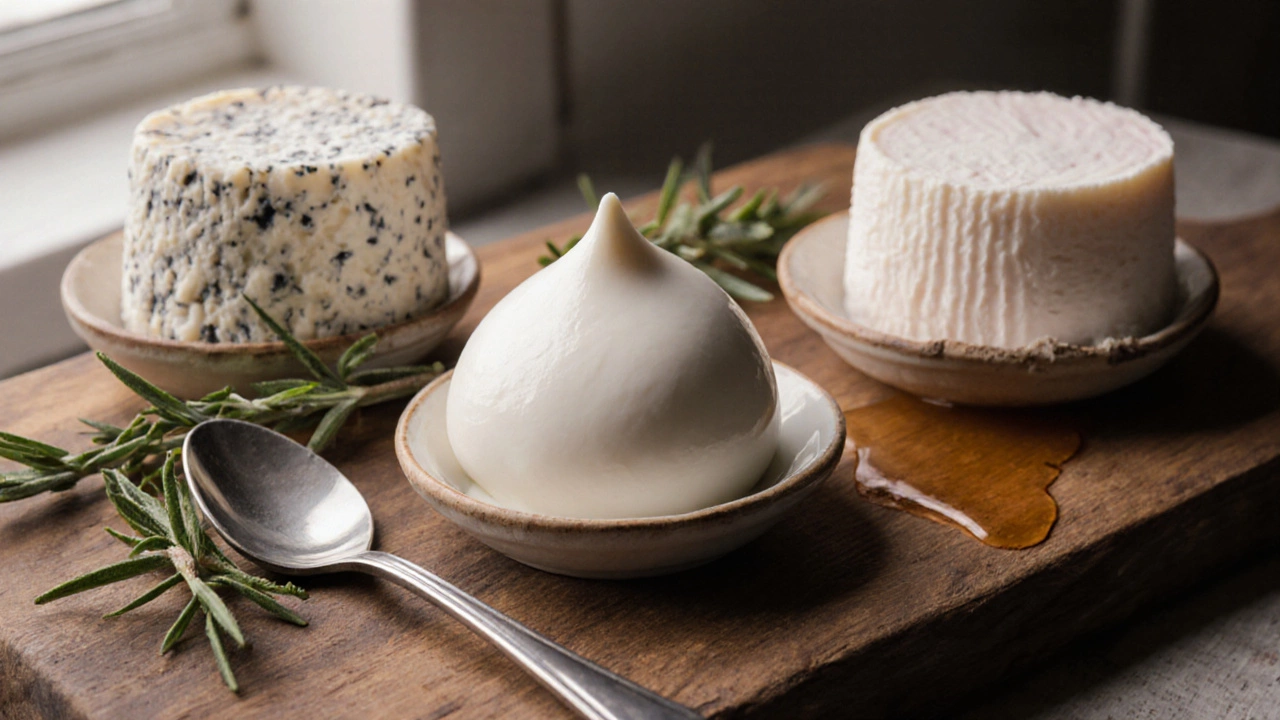
Mascarpone in Classic Recipes
Two dishes stand out as ambassadors of mascarpone:
- Tiramisu - The iconic Italian dessert layers espresso‑soaked ladyfingers with a mixture of mascarpone, egg yolks, sugar, and a splash of Marsala. The cheese’s creaminess balances the coffee’s bitterness.
- Mascarpone cheesecake - Swap out the usual cream cheese for mascarpone to create a lighter, silkier slice that still holds its shape.
Beyond sweets, chefs are experimenting with savory plates: a dollop of mascarpone on top of roasted vegetables adds richness without overpowering the dish, and a sauce made from mascarpone, lemon zest, and fresh herbs works beautifully over grilled fish.
Storage Tips and Shelf Life
Once opened, keep mascarpone refrigerated at 4°C (40°F) in an airtight container. It stays fresh for 5‑7days. If you notice a sour smell or mold, discard it - the high fat content can spoil quickly.
Some home cooks freeze mascarpone in portion‑size blocks for up to two months. Thaw slowly in the fridge and stir vigorously to restore its smooth texture; a brief whisk with a splash of cream can revive it for frosting.
Common Misconceptions
Many people assume mascarpone is simply “Italian cream cheese,” but that’s misleading. Unlike American cream cheese, which contains milk solids and a starter culture, mascarpone is purely cream‑based and lacks the tangy fermentation notes. The result is a sweeter profile that doesn’t need additional sugar in many desserts.
Another myth is that mascarpone is a luxury ingredient only for professional kitchens. In reality, a modest 200‑gram tub can be purchased at most supermarkets for under $5, making it accessible for home bakers.
Choosing Quality Mascarpone
When shopping, look for these clues:
- Label says “pasteurised” - ensures safety and consistent texture.
- Fat content listed near 50% - guarantees richness.
- No added stabilisers or thickeners - pure cream yields the best flavor.
Italian brands like Galbani and Parmasan are often praised for authenticity, but many local dairy producers in the U.S. and UK now craft excellent mascarpone using the same traditional method.
Quick FAQ
Frequently Asked Questions
Is mascarpone the same as cream cheese?
No. Mascarpone is made only from cream and has a higher fat content (45‑55%) and a sweeter, milder flavor. Cream cheese includes milk, cream, and a starter culture, giving it a tangier taste.
Can I substitute ricotta for mascarpone?
You can, but the texture will be grainier and the fat level lower. For desserts where a silky mouthfeel matters-like tiramisu-ricotta won’t give the same result.
How long does opened mascarpone last?
Stored in an airtight container in the refrigerator, it stays good for about 5‑7days. Freeze for up to two months if you need to keep it longer.
What dishes besides tiramisu use mascarpone?
Mascarpone works in cheesecakes, frosting, fruit tarts, and savory sauces for fish or vegetables. It can also be folded into whipped cream for a richer mousse.
Is mascarpone gluten‑free?
Yes, pure mascarpone contains only dairy ingredients, making it naturally gluten‑free. Always check the label for any added flavorings that might contain gluten.
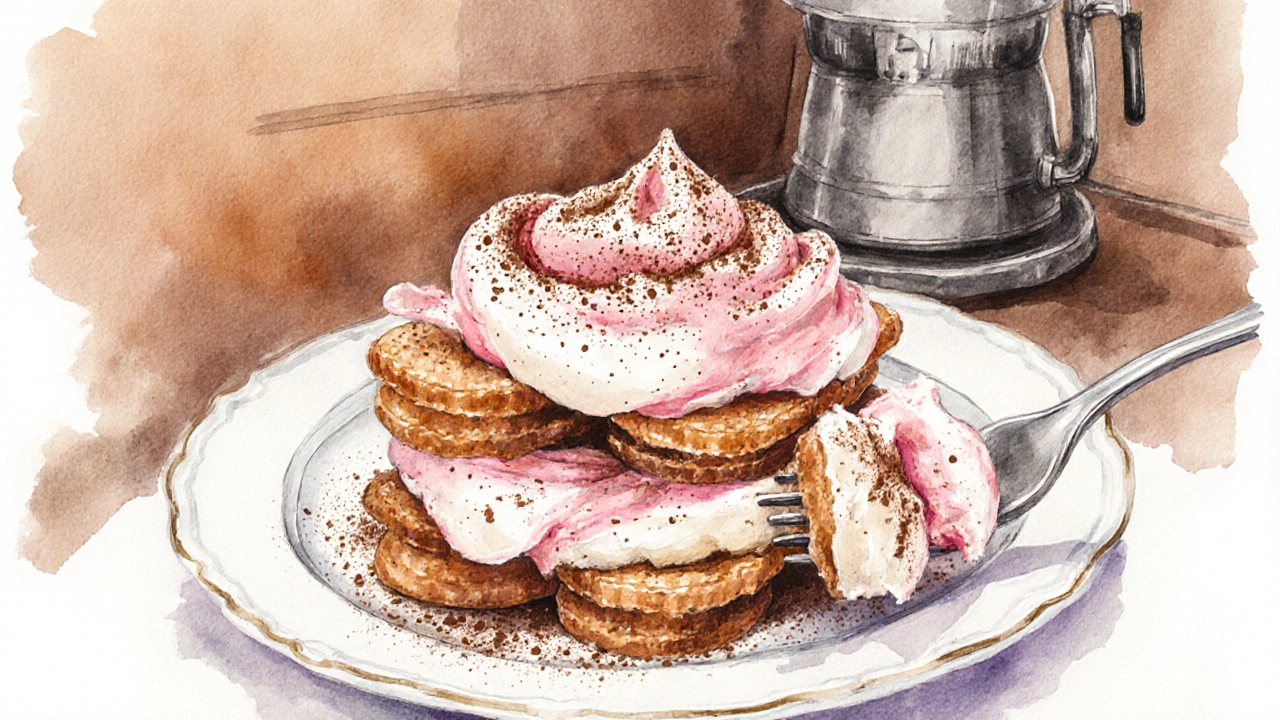
Wrap‑Up Thoughts
Understanding the word mascarpone gives you more than just a definition - it unlocks a versatile ingredient that can elevate both sweet and savory dishes. Whether you’re layering it in tiramisu or smoothing it into a creamy sauce, knowing its origin, production method, and how it stacks up against similar cheeses helps you use it with confidence. Next time a recipe calls for “mascarpone,” you’ll know exactly what that creamy, buttery name stands for.

